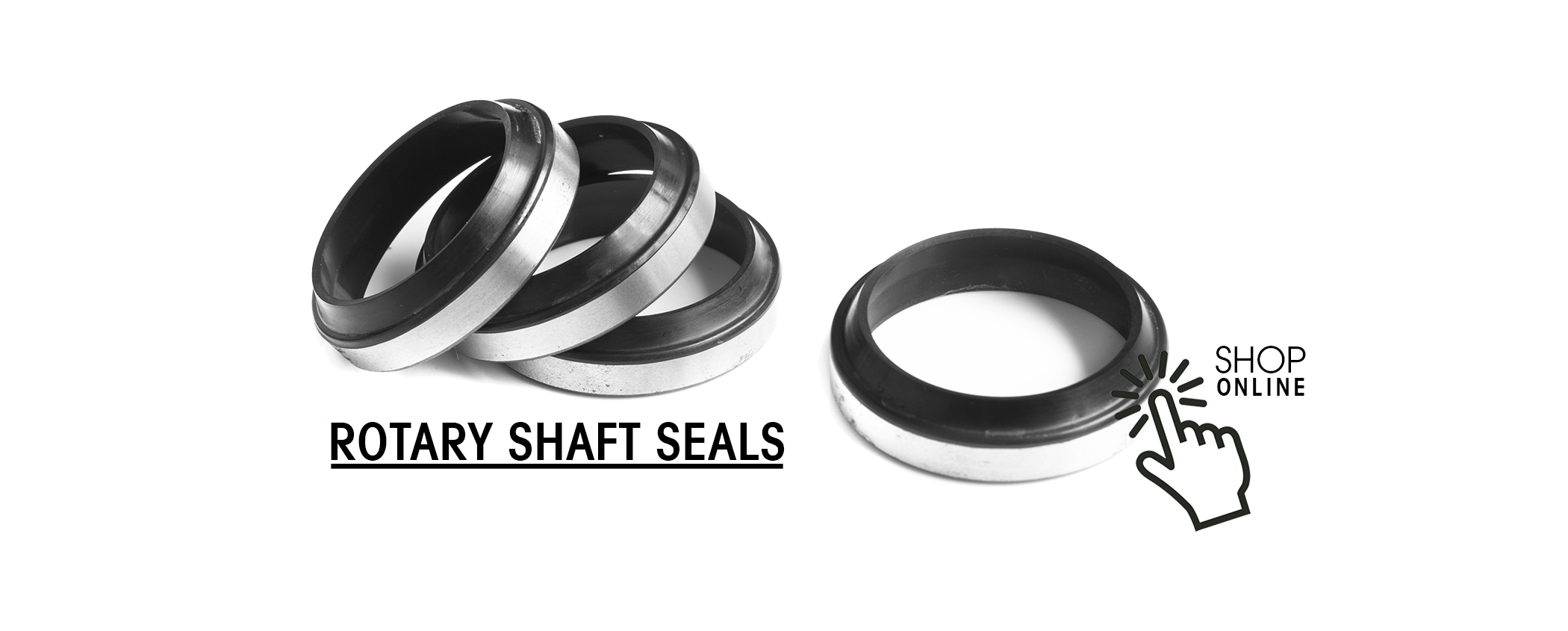
They keep dirt, dust, water and other particles out, whilst retaining lubricant in the rotary shaft components
The rotary shaft seals, belonging to the rotating gasket family, are also known as oil seals. Their main function is to close spaces between stationary and mobile components in mechanical equipment. They are used to prevent the escape of lubricant and prevent contaminants/harmful external particles from entering the machinery. Gaskets are common in almost all types of machines and vehicles where there are bushings, sleeves, bearings etc.
At JIOrings you will find more than 40,000 rotary shaft seals in stock: simple lip seals (whose function is to prevent leaks and contamination by external elements), double lip (which also prevent the loss of lubricants and grease due to mechanical displacement), mirror seals, HP seals for high pressure etc.
The correct choice of the rotary shaft seal depends on the application and the conditions (the medium, temperature, circumferential speed of the shaft and pressure) in which it will be used. As in almost all cases, the assembly of the retainer is of vital importance for its correct operation. To ensure safe placement of the retainer in the housing, and to prevent damage to the seal, JIOrings recommend using appropriate mounting devices.
We have a wide range of rotary shaft seals made of NBR, FPM and PTFE in our warehouses, as well as the standard steel (INOX 304 or INOX 316) spring and reinforcement ring. When selecting the retainer elastomer, it is helpful to remember:
NBR
• High wear resistance
• Suitable for use with mineral oils and greases
FPM
• Good aging and ozone resistance
• Low gas permeability
• Suitable for use with mineral oils and greases, as well as chemically aggressive agents (acids, alkaline solutions, etc.)
• Suitable for high temperature applications and high circumferential speeds
• Suitable for use with synthetic oils and greases
PTFE
• High ozone, weather and age resistance
• Very low coefficient of friction
• Wide chemical resistance
• Suitable for defective lubrication and dry operation
• Suitable for a wide range of thermal applications
And to understand the nomenclature of the seals, you just have to know that the initial letter (B, C, D) indicates the type of retainer:
• C = Standard rotary shaft seal
• B = Metal rotary shaft seal
• D = Shielded rotary shaft seal
And the final letter (B, C) indicates whether it is single-lip or double-lip:
• B = Single lip
• C = Double lip
Remember that apart from the JIOrings nomenclature, the seals have their own equivalent references. Do not forget to consult them, before placing your order:
• CB seals = A / BA / G / SL / SC / WA / DG
• CB seals without spring = VC / WAO / INA / BAOF
• CC seals = AS / BASL / GP / DL / TC / WAS / DGS
• BB seals = B / B1 / WB / SB / DF
• BC seals = BS / B1SL / WBS / TB / DFS
• DB seals = C / B2 / T2SL / SA / DFK / SA2
• DC seals = CS / B2SL / T2DL / TA / DFSK / TA2
• PC seals = BABSL / WASY / AS-P
• HP seals = B2PT
Check and buy our Rotary Shaft Seals online
| Type | Profile | Material | Temperature [ºC] |
Speed [m/s] |
Check stock |
| CB |  |
NBR | -20 to +100 | ≤30 | |
| CB |  |
FPM | -20 to +200 | ≤30 | |
| CB whithout spring |
 |
NBR | -20 to +100 | ≤30 | |
| CC |  |
NBR | -20 to +100 | ≤30 | |
| CC |  |
FPM | -20 to +200 | ≤30 | |
| BB |  |
NBR | -20 to +100 | ≤30 | |
| BC |  |
NBR | -20 to +100 | ≤30 | |
| DB |  |
NBR | -20 to +100 | ≤30 | |
| DC |  |
NBR | -20 to +100 | ≤30 | |
| HP |  |
PTFE FDA+INOX304
PTFE/VIDRIO/MOS2+INOX304 |
-90 to +250 | ≤45 |
